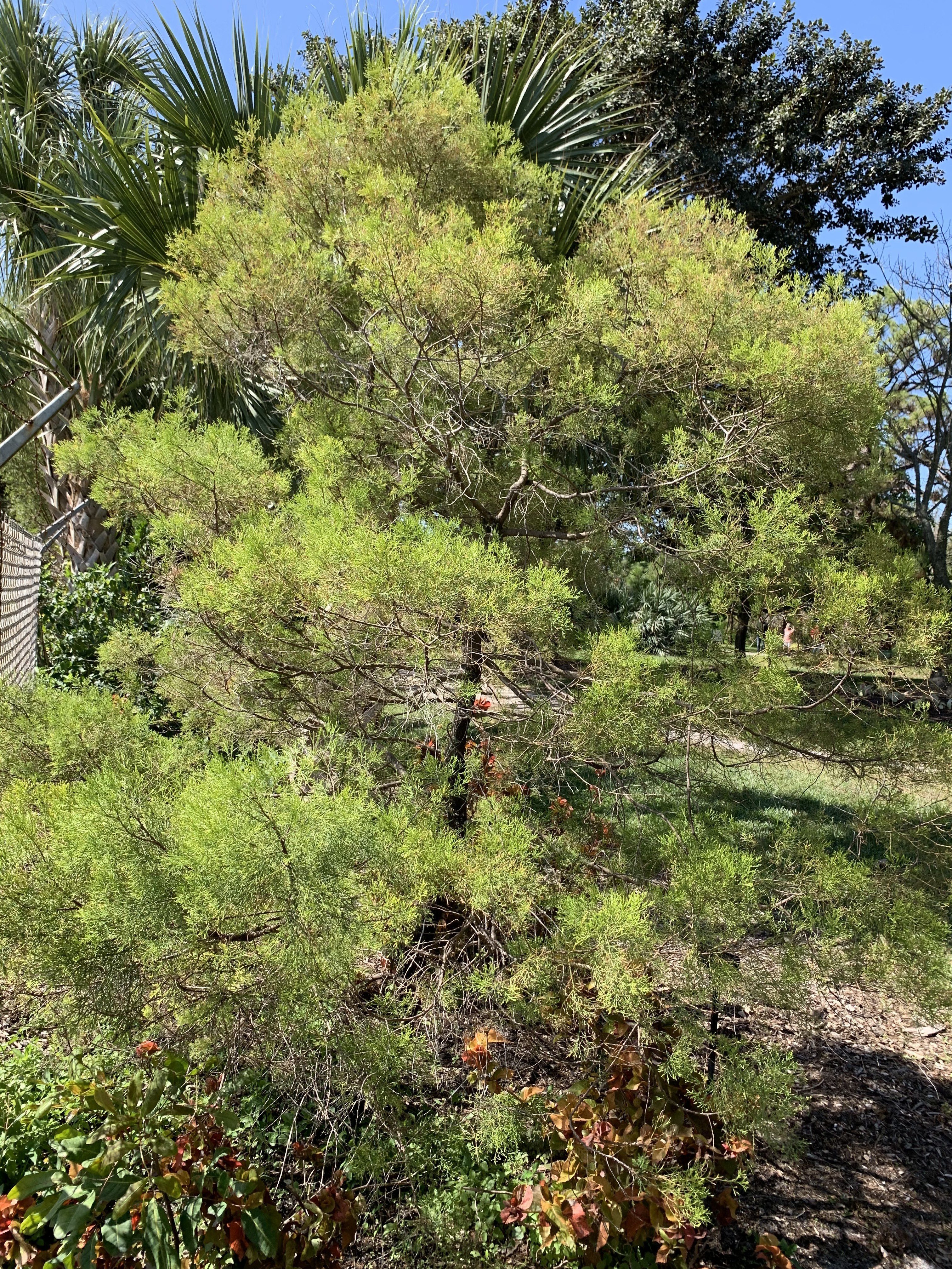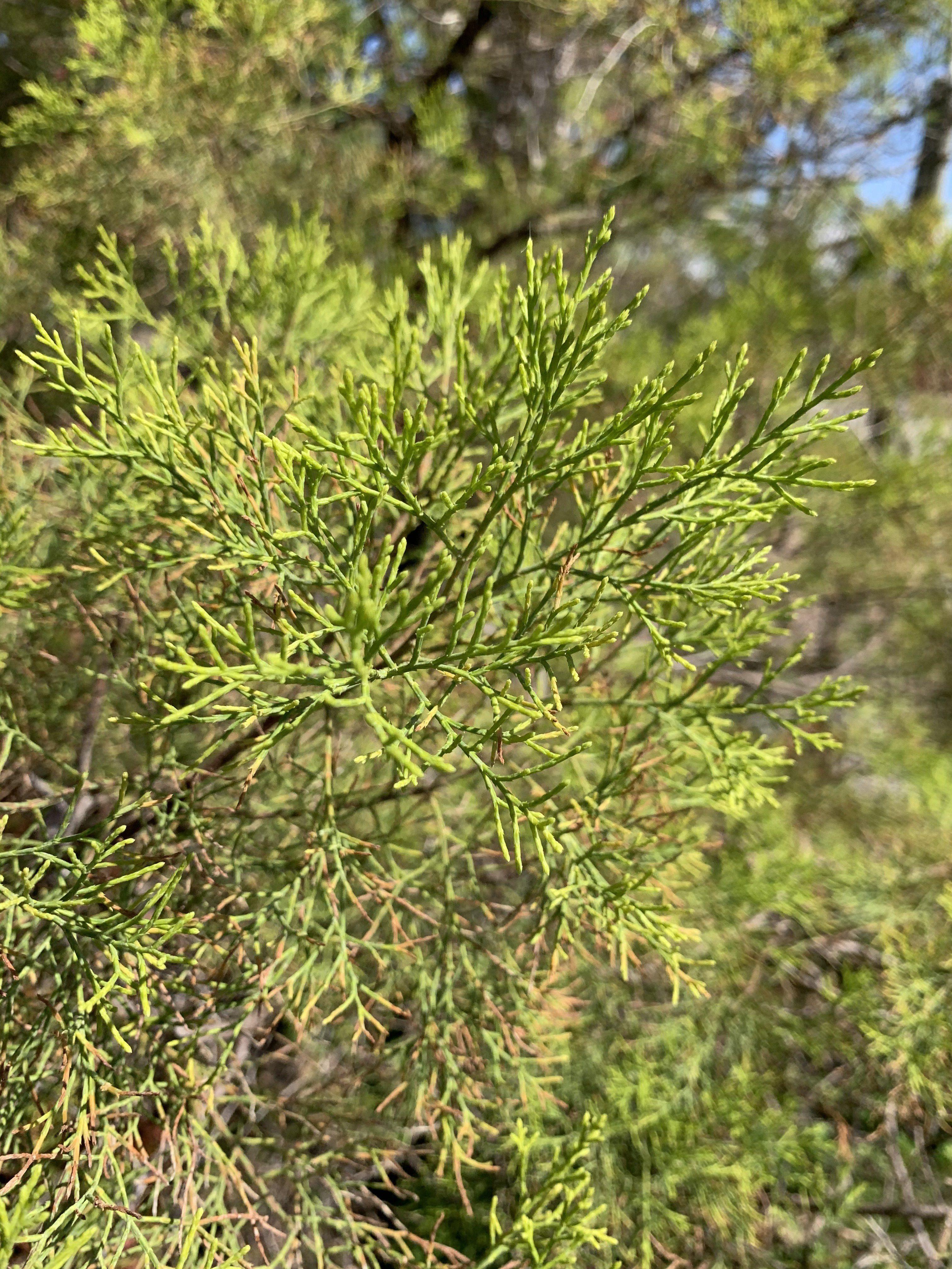Callitris columellaris, as described in 1866 by Ferdinand Jacob Heinrich von Mueller, in Fragmenta Phytographiae Australiae, 5th edition, is commonly known as coast cypress pine, Bribie Island pine, Murray River pine, Murray pine, northern cypress pine, western sand cypress, western cypress, white cypress pine, white pine, coastal cypress, sand cypress, slender native cypress pine, western cypress pine. Aboriginal names include lagumin and karntirrikani.
The epithet columellaris refers to the columella, which is the small pillar of woody tissue at the heart of a Callitris seed cone.
Description. Murray River is an evergreen coniferous species of tree that grows to mature heights of 100 feet (30 m) tall, with a single trunk of spreading or erect branches.

